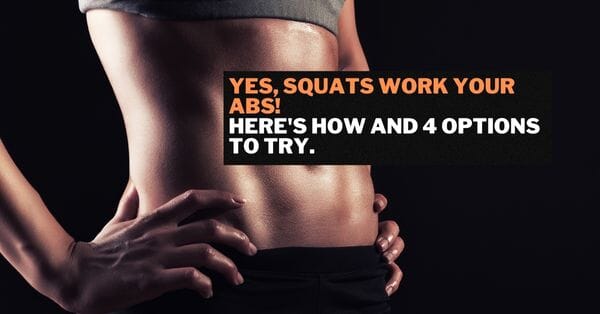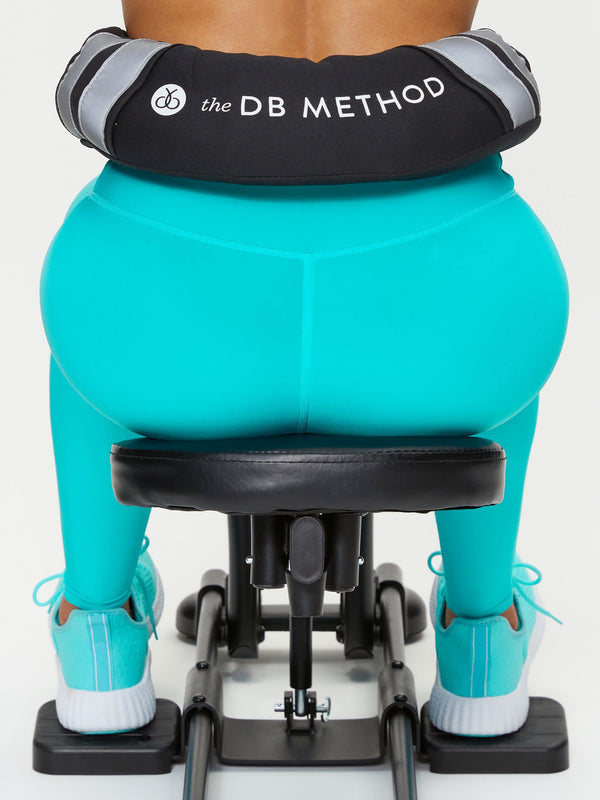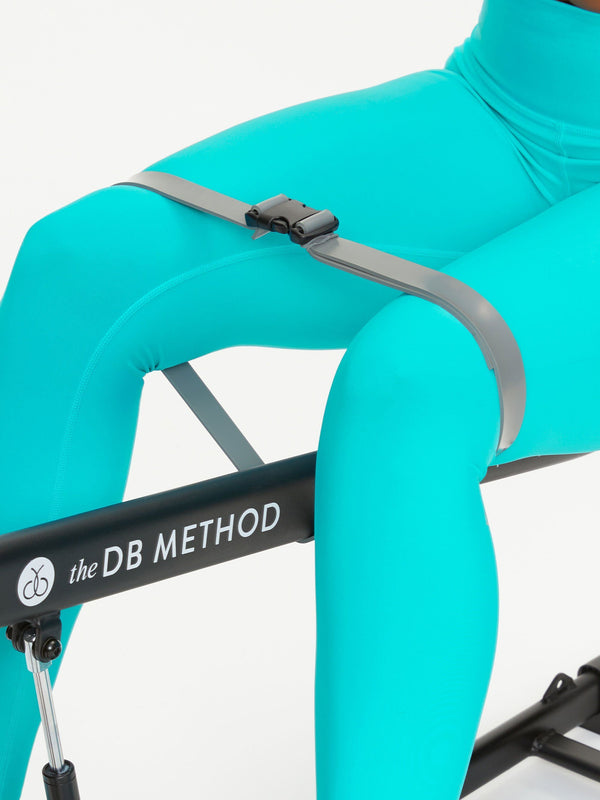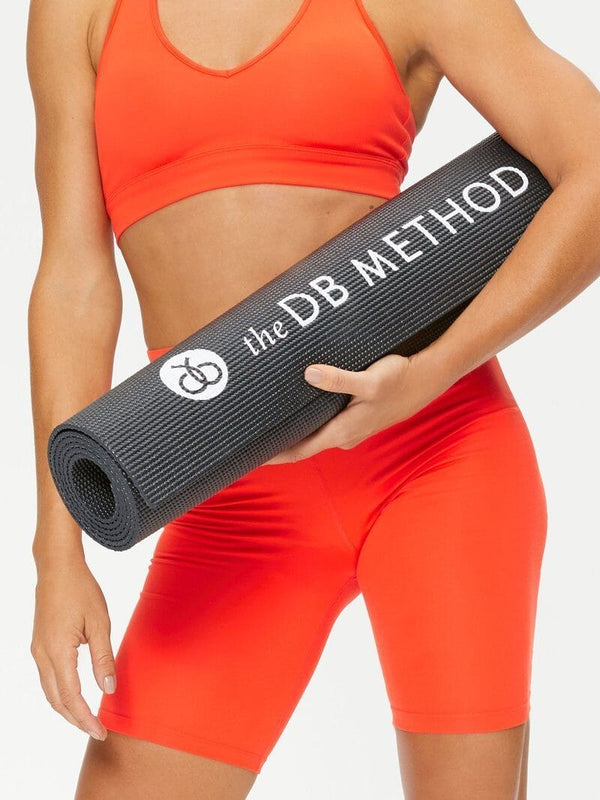Yes, some squats do work your abs muscles, and all squats work your core. Your ab muscles are a subset of your core, but they are not one in the same. That is where a lot of confusion comes in.
Core muscles that get worked with squats, and are not abs, include the lumbo-pelvic-hip complex. Here's an example.
A barbell back squat focuses on your lower back muscles, and in order for them to stabilize you have to brace your abs to counterbalance the load. Therefore a barbell back squat is a squat that works your abs.
But it is important to remember that you have to remember to use your abs, as it may not happen naturally. This is why it is important to have a trainer or licensed professional check your form while you squat. A licensed professional will be able to help get you in the habit of holding the correct position.
Although you won’t get six pack abs from squats alone, you can tighten and tone your core, and strengthen your lower body when doing them. And a stronger legs and core can help you level up your ab workouts.
This comes from the squat options that work your quads. Having strong quads can help with lower ab exercises like leg lifts.
Your core (which your abs are a part of) plays a critical role during a squat, because your core transfers the force from your lower body to your upper body. This helps you to maintain the proper squat form for maximum effectiveness.
The movement of some squats can engage the following ab muscle groups:
- Rectus abdominis (often called your abs)
- Obliques (the side muscles in your abs)
- Transverse abdominis (the deepest muscle in your abdominal wall)
Rectus Abdominis
This is the ab muscle that flexes your spine, or in other words “rounds it” during the movement. During a squat, your rectus abdominis stabilizes your spine and torso if you remember to engage it.
This ab muscle creates a counter force to the lower back muscles (the ones causing the arching to happen) and work in tandem to stabilize both your trunk and spine.
Obliques
Your obliques stabilize your torso and pelvis during a squat. As you squat, your obliques work with your core abs helping you maintain balance and keep you from wobbling side to side. And when you have strong obliques, you’ll find daily activities where you bend side to side, and sports that involve rotation like throwing a baseball become easier.
Transverse Abdominis
Your transverse abdominis is a deep muscle in your abdominal wall that wraps around your waist that helps to stabilize your spine and pelvis during a squat. This muscle helps you to maintain proper posture by contracting and supporting your spine and preventing your spine from rounding.
Keeping your spine from rounding helps to prevent issues like back pain, poor balance, and decreased mobility.
The Types of Squats That Work Your Abs
Remember that the abs are a part of the core. When squatting, the core stabilizes the lumbo-pelvic-hip-complex and transfers forces from the lower body to the upper body. Different squat variations challenge the core in different ways.
The key for ab work in squats is therefore learning to engage the abs correctly under each circumstance. Here are four types of squats that are more “ab”-centric than others.
Standard Squat Machine Squat
A traditional squat machine is an ideal way to learn to engage your abs when squatting. The squat machine offers a guided path for finding form and has the additional advantage of not loading external weight onto the shoulders. This means that you can practice two distinct and useful ways to engage the abs.
- Drawing in. This technique engages the transverse abdominis for increased activation of the deeper core muscles. Practice gently drawing in your navel slightly and maintaining that position while breathing freely and moving throughout the squat.
- Bracing. This is engaging the larger, more powerful abdominal muscles of the rectus abdominis and internal/external obliques. Imagine creating three-dimensional pressure outwards with those muscles, as though bracing for a punch to the stomach. Hold that tension and feel how your trunk is stabilized.
Here's how to use a squat assisted machine:
- Grab the handrails of the squat machine and place your heels onto each of the foot ramps.
- Shift your hips back to make contact with the seat guide of the squat machine.
- Lean back and extend your arms.
- Engage your core (either through drawing in or bracing) and send your hips back into a gently arc as you squat down
- Press through your heels and engage your glutes to get back to the starting position.
Zercher Squats
Because you hold the bar in the crook of your arms and put the weight in front of your center of mass, Zercher squats engage your core so you can stay upright keeping proper form. The key here is the bracing technique (noted above) to create strong trunk stability.
- Hold a barbell in the crooks of your arms.
- Brace your core muscles and pull your shoulders down and back.
- Get into a squat stance.
- Bend your legs, push your hips back, and squat down until your thighs are parallel to the floor.
- Drive your feet into the floor to stand back up into the starting position.
Pro-tip: If the barbell is uncomfortable on your arms, use a squat barbell pad.
Overhead Squats
Since overhead squats increase the distance between the weight and your hips, your core and abs work harder to stabilize the weight and keep it over your feet. Remember to actively brace your abs throughout the entire motion.
- Raise and hold a barbell above your head with your hands shoulder width apart.
- Pull your shoulders down and back and brace your core.
- Get into a squat stance.
- Bend your legs, push your hips back, and squat down until your thighs are parallel to the floor while keeping your arms straight and the weight over your feet.
- Drive your feet into the floor to stand back up into the starting position.
Single Arm Kettlebell Front Squat
Utilizing a single arm kettlebell provides a further challenge by intentionally loading the body in an uneven fashion. Double-down on the bracing technique and be especially mindful of how the obliques must work to keep your torso aligned when the load is uneven.
- Raise a kettlebell and rest it on the front of your left shoulder.
- Pull your shoulders down and back and brace your core.
- Get into a squat stance.
- Bend your legs, push your hips back, and squat down until your thighs are parallel to the floor while using your core to keep as upright as possible.
- Drive your feet into the floor to stand back up into the starting position.
- Switch sides.
All squats work your abs, but some engage your core muscle groups more than others. It is based on the movement and your body position. If you’re looking for more options of squats that also give you an ab workout, subscribe to our blog and join our workout community.








